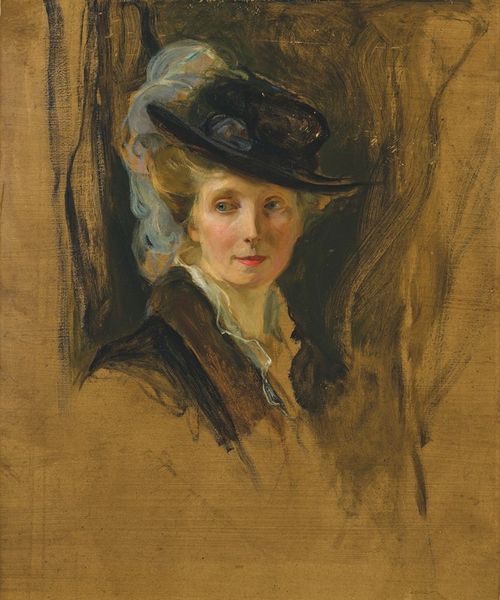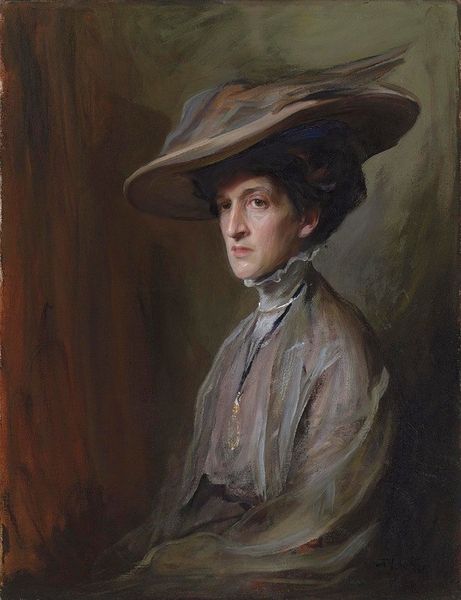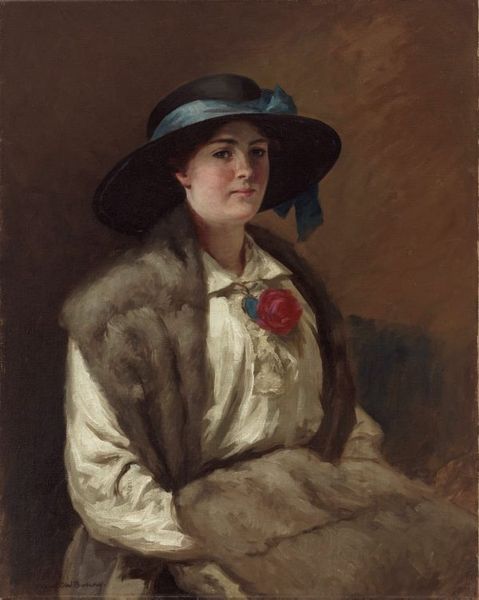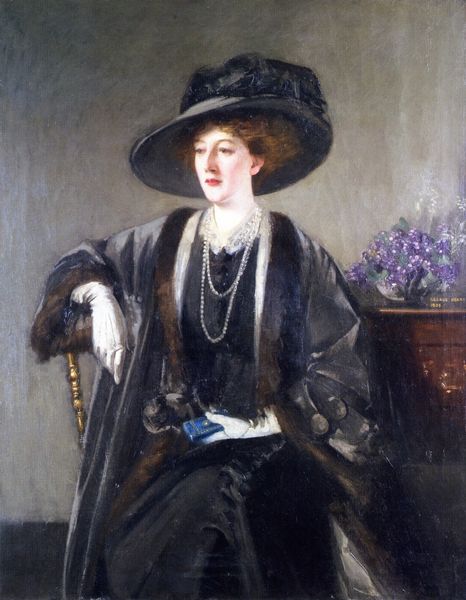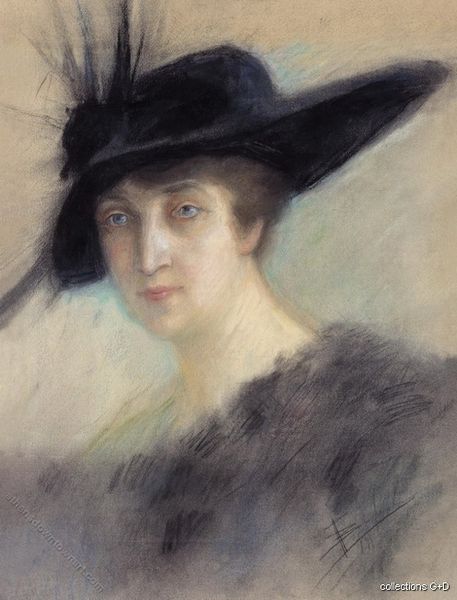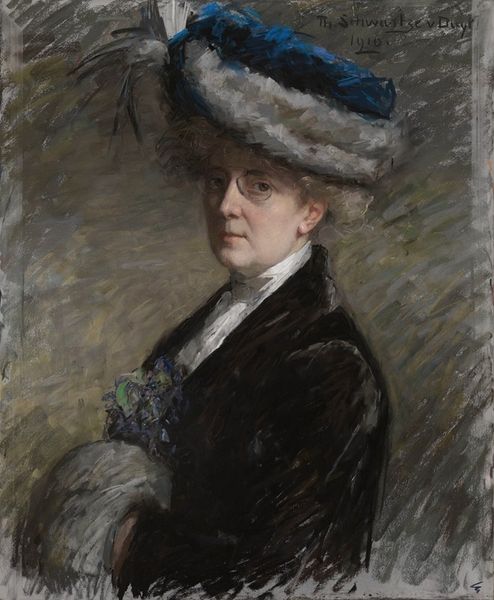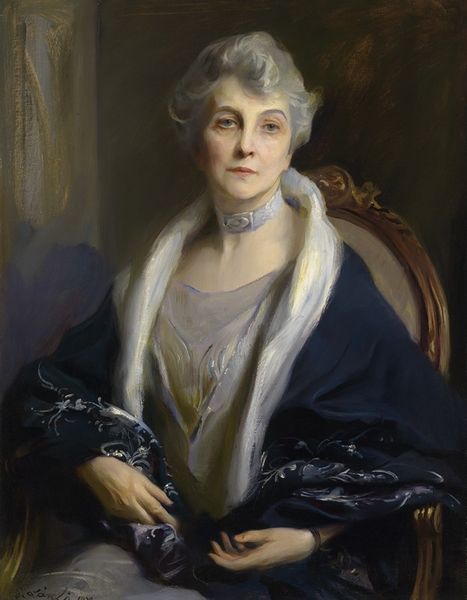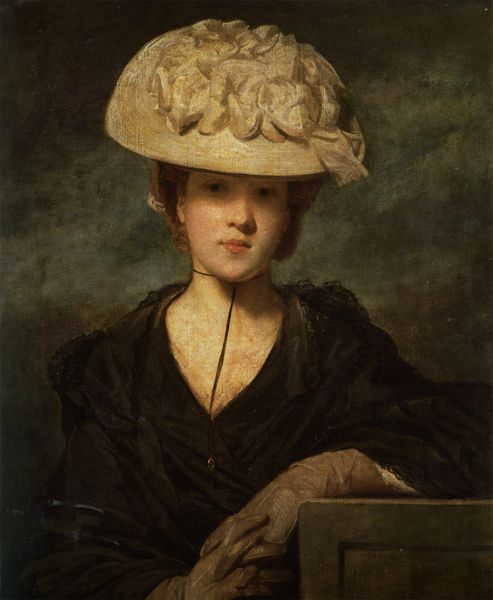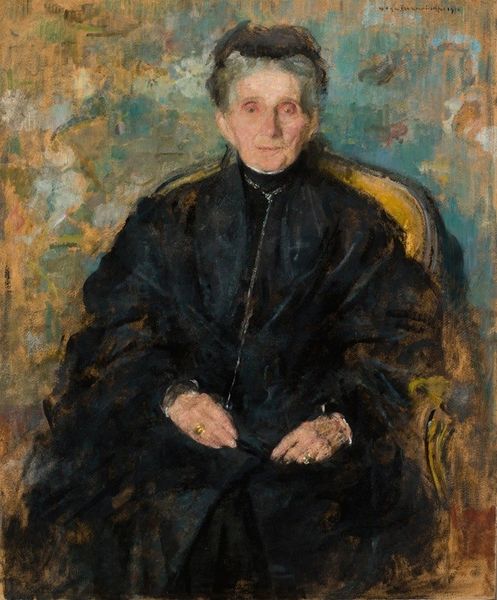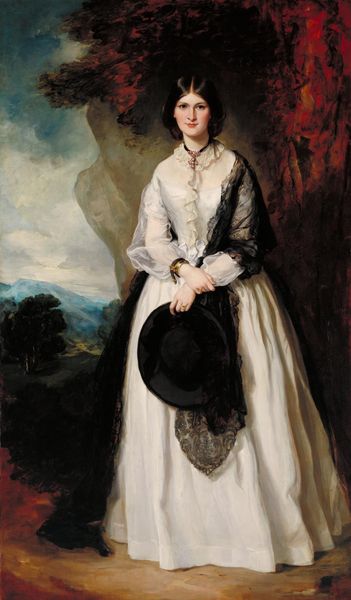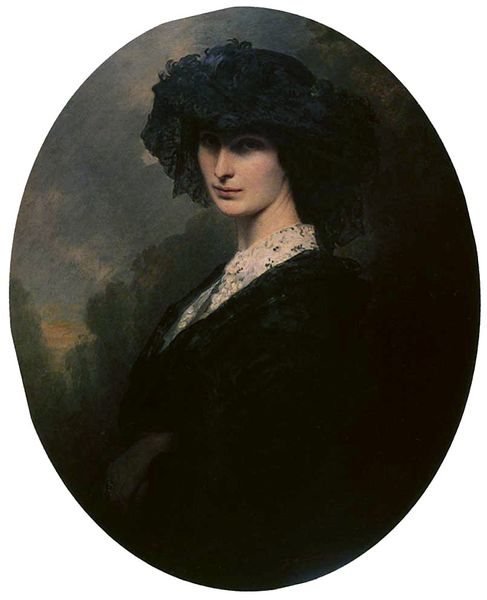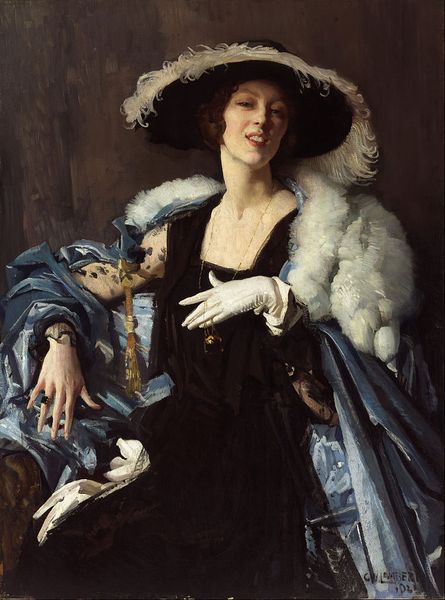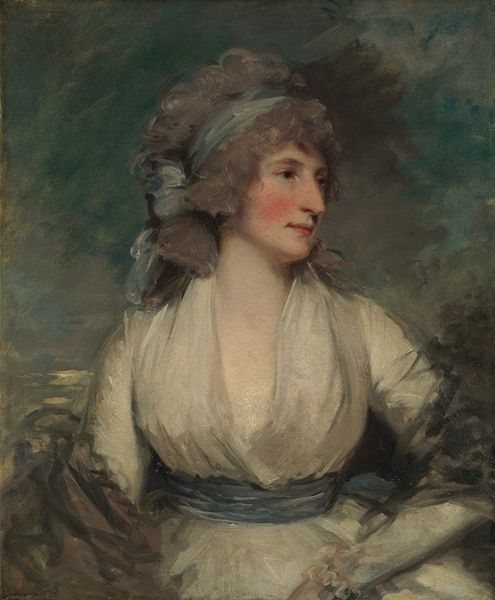
Dimensions: support: 955 x 745 mm frame: 1235 x 1038 x 90 mm
Copyright: CC-BY-NC-ND 4.0 DEED, Photo: Tate
Editor: Here we have Philip Alexius de László's portrait of Lady Wantage. The textures of her dress and the sheer veil are just beautiful! What can you tell me about this portrait? Curator: Notice the visible brushstrokes, the very means of production. De László's technique, his application of paint, is foregrounded. The material handling itself becomes a key subject, almost as important as the sitter’s social standing. Editor: That's interesting! I hadn't considered the actual paint as a subject. Curator: Consider how the handling of materials, like the luxurious fabrics depicted, speaks to both Lady Wantage’s wealth and the artist’s skill in rendering them. It reflects a system of value, both artistic and economic. Does that shift your understanding? Editor: It does. Thinking about it in terms of materials and production really opens up a new perspective. Thanks! Curator: Indeed, art is never just about the surface. Examining the making reveals so much more.
Comments
Join the conversation
Join millions of artists and users on Artera today and experience the ultimate creative platform.
tate 6 months ago
⋮
De Laszlo trained in Budapest, Munich and Paris. When in 1907 he moved to Britain he had already painted portraits of many of the royal families of Europe, as well as Pope Leo XIII, and had married a member of the Guinness family.Lady Wantage was the widow of an army officer. Her portrait is said to have been painted in a single session on a Sunday morning after church, when she was still wearing a veil and crucifix, and holding her prayer book. It is more likely that her costume was intended to represent this moment. Gallery label, August 2004
